Solar PPA vs Lease vs Buy
The Pros & Cons Of Each
In this guide, you’ll learn everything you need to know to compare a solar lease vs power purchase agreements (PPA) vs buying solar panels for your home.
With so many choices, it can get confusing quickly, and getting it wrong can lock you into a contract that might not be the best choice for you and your family.
The question is which solar energy option is best for your family and your property?
The goal of this guide is to help you make a more informed decision in answering that exact question.
Let’s dig in and examine the features and benefits, plus the pros and cons of each option.
First and foremost, we all owe some thanks to the creation of solar leases, PPAs, and loans because they helped make it easy for homeowners and businesses to take advantage of solar energy and save serious money by protecting their property against the bulk of future utility rates increases.
The solar power purchase agreement (PPA) and solar lease made solar affordable for the average homeowner and small to medium-sized business.
Those two solar financing products required no down payment, and if your property is a good fit for solar panels, and your electric bills are high enough, and your credit was good, you’re likely to start saving money the very first month your solar lease or PPA system is turned on.
That ease of entry to go solar helped create the economic boom that has happened in solar energy.
Later, the solar loan came into being, which offered the same zero money down and immediate savings as the lease or PPA, but now you would own the energy system, and after the contract term, it’s yours free and clear — providing free electricity every day afterward.
Maintaining your solar energy system is simple and inexpensive, requiring only rinsing them with water to keep them clean, and keeping them free from shade. See our solar maintenance guide for more info.
This guide assumes you’re already aware of the potential financial benefits of going solar, and now want to know more about the differences between PPAs, leases, and solar loans. If it’s better for you, perhaps start with our article with “9 Reasons to Choose Solar Panels for Your Home.”
For the guide, we’ll start with short explanations of your solar financing options then move on to more detailed comparisons below.
Quick Definitions
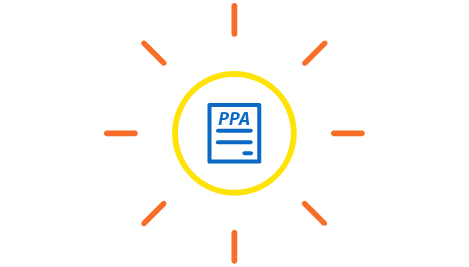
Solar PPA (power purchase agreement)
The solar PPA company pays for the system, installs it, and connects it to the home and utility company.
The homeowner gets solar energy at a stated fixed price per kilowatt-hour (kWh) for a stated amount of time.
The PPA’s price per kWh amount should be less than what you’re currently paying for utility company electricity.
For more information, see our Solar PPA article or visit the EPA’s website on solar power purchase agreements.

Leasing Solar Panels
The solar leasing company pays for the system, installs it, and connects it to the home and utility company.
In a solar lease, the homeowner is renting the solar energy equipment for a fixed monthly payment.
In exchange, the homeowner receives all electricity the system produces.
The solar lease payment should be less than the homeowners current average electric utility bill, so savings starts on day one.

What’s the difference between a solar lease and PPA?
It’s a subtle but significant difference whereas the solar lease is an equipment rental and performance agreement, versus the solar PPA, which is an energy contract, where homeowners are paying for the exact kilowatt-hours (kWh) the system produced the previous month.
Both of these financial instruments usually balance things up when actual energy for the year is known, and annual adjustments are applied. So the devils are always in the details as they say.
Visit the Solar Energy Industries Association (SEIA) for sample contracts for both residential and commercial solar power purchase agreements (PPAs) and solar leases.
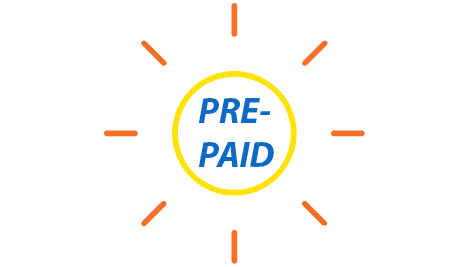
Pre-Paid Solar Lease
The solar pre-paid lease usually requires a $1,000 down payment, and then a single payment after installation and the system is operating with no more payments due after that.
The pre-paid solar lease has all the same features as a standard solar lease except the payment structure.
The pre-paid solar lease will generate the most savings for its term of years than any other type of solar lease or PPA.
Only a buying a system produces greater savings than a pre-paid lease over the same number of years, and even then it depends on the financing instrument of the purchase.
The pre-paid solar lease can be the perfect choice for a recently retired couple whose income is non-taxable, which prevents them from using the solar tax credit, but they would still like to significantly reduce their electricity costs over the next 20 to 25 years.
The pre-paid solar lease usually provides people with non-taxable income with the most significant savings potential of all solar financing choices.

Solar Loan
Zero money down solar loans make buying and owning your solar power system more accessible than ever.
With the same ease of entry as a lease or PPA, you can now own your solar energy system, which usually produces more significant savings.
When the solar loan is paid in full, the homeowner will own the system free and clear, and all the electricity it produces from then on is 100% free!
High-quality solar power systems are designed to last 40+ years.
Owning the solar energy system installed on your property provides the most significant financial savings over time and the most flexibility when selling the property.
When a system is purchased, the homeowner receives all tax benefits and renewable energy credits (if applicable).
For more information on our solar loans, see our solar financing page.
Solar loan on property taxes (PACE loans)
In California and some other states, some counties have made “property assessed clean energy (PACE)” loans available.
PACE loans apply the loan and interest to your property taxes. These are public-private financing collaborations.
These PACE loans are easier to qualify for because they usually don’t take customer FICO scores into account. Instead, these PACE loans are based primarily on the available equity in the property.
Most PACE loans only credit requirements are home equity, no bankruptcy in the last two or three years, and no missed mortgage payments over the previous two or three years.
Of course, these PACE loans have higher costs than solar loans or home equity loans, which have additional credit qualifying.

Buying Solar with Cash
Not too many systems get paid with money from checking or savings accounts, but if you’ve got it, solar power puts it to good use.
Investing money in a solar power system for your home or business usually comes with excellent double-digit returns on investment (ROI).
The majority of cash deals in solar usually involve the funds coming from a home equity loan or line of credit.*
*Note that these two options usually provide the lowest cost financing options for purchasing.
2What is the average price of a solar power system?
Many factors decide what the cash price of your solar power system will be.
Factors include your choice of solar panels, inverters, location of installation, and much more.
For more information on the factors that dictate the size of solar power systems, see our article entitled, “How many solar panels does my house need?”
However, let’s use a made-up example of a solar energy system purchase so we can all see how the pricing and federal tax credits work.
$30,000 = price of purchase & installation of example solar power system
-$ 7,800 = 26 percent federal tax credit [2022 only]
$22,200 = net price
The solar investment tax credit (ITC)
The 26 percent federal income tax credit applies only to those people who have enough taxable income to make use of the tax credits.
Typically, you will file for your federal solar investment tax credit (ITC) after December 31st of the year it was installed and made operational.
If your federal income tax liability was equal to or greater than your ITC, then you’re eligible to receive an IRS refund or credit equal to 26 percent of the total cost of your solar energy system (if installed by 12/31/2022).
If your federal income tax liability were LESS than the amount of your ITC, you would receive a credit equal to your total liability up to your ITC amount, and the balance will roll over to be claimed in the following years.
If you already OWE federal income taxes, then your ITC can or will be used by the IRS to pay that debt first before refunding any excess to you.
Consult with your tax advisor for more detailed information about the federal tax credit for solar energy systems, known as the Federal Investment Tax Credit (ITC) for renewable energy systems (a.k.a. Residential Energy Credits) and how it applies to you.
Important Tax Info: If your income is primarily from non-taxable sources like pensions, social security, municipal bonds, and other financial instruments, then purchasing a solar power system may not be your best choice because you probably won’t be able to use the income tax credit, which would make it cost 26 percent more. A lease or pre-paid lease may be a better option. Consult your tax advisor.
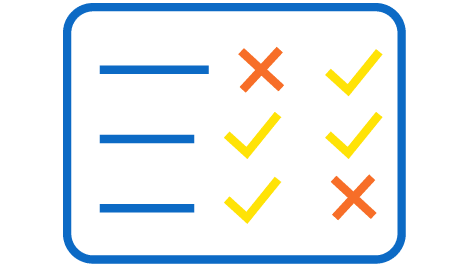
Comparisons of Solar PPA, Lease, and Loan
Choose Your Power®

Length of the solar contract term
Home equity loan or line of credit = 1 to 30 years, usually have best interest rates, check with your bank or credit union.
solar loan = 1 to 25 years, available through solar dealers-contractors and online from Sungage Financial, Green Sky Finance, Enerbank, and other green energy or home improvement financing companies.
PPA = usually 20 to 25 years
Lease = usually 20 to 25 years
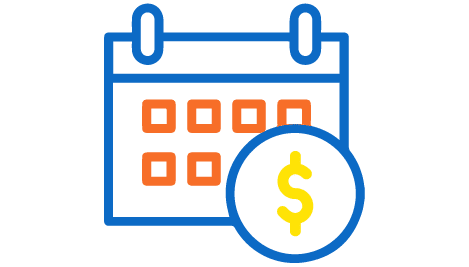
Monthly solar payment
Solar loan = the homeowner owns the solar energy system and pays a monthly payment to the solar loan company or their bank’s home equity loan.
That solar loan payment is usually a fixed payment, but annual adjustable payments also exist for some solar loans.
The amount of energy the solar energy system produces each year has no impact on the monthly solar loan payment.
The solar loan is usually two loans in one because it loans you the money you expect to get back with the 26% federal income tax credit (if installed by 12/31/2022), and it expects you to pay that part back next year after you file and get the refund check.
Usually, you have 18 months to repay the expected federal tax credit refund amount, which in turn keeps your monthly solar payment level.
If you do not repay the stated tax credit loan amount when it’s due, then most solar loans will recalculate the total remaining loan amount (they had projected a lower balance after you repay the tax credit loan, but now the balance is different) and your monthly payment will go up significantly to reflect the new adjusted loan schedule.
PPA = the homeowner agrees to pay a stated price per kilowatt-hour of energy (kWh) for all the electricity produced by the system.
The amount can take one of two forms; either the monthly PPA payment will fluctuate each month with exactly how much energy the system produced (the most common method) or, an estimated annual production is stated then divided by twelve months to provide a level monthly payment throughout the year.
Note that in a level payment PPA plan there is usually an adjustment every twelve to thirty-six months, called a true-up event, to reflect the actual energy delivered to the customer.
If the system underproduced per the stated contract projections then the PPA company either issues credits or rolls them over to future years or periods as the stated in the contract (it’s all in the contract, and you should be sure to read every word).
If the solar energy system over-produced in any given year of a level-payment solar PPA, then the solar PPA company will send you an invoice for the amount due for the excess energy you received. They may also calculate this based on an average of more than one year, see the PPA contract for exact terms.
Lease = the homeowner pays a fixed and level monthly rental price for the solar equipment.
Note that the lease may also include an energy true-up either annually or for another period (see annual true-up).
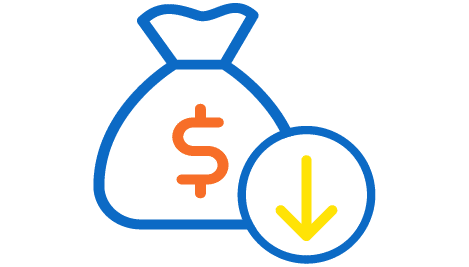
Down payment
Loan = zero, almost all solar loans are zero money down but include an option to put money down to reduce the monthly payment if the customer wishes to do so.
Any down payment will also reduce the total interest paid and produce additional savings to the customer.
PPA = zero, most PPA’s do not require any down payment, though the host customer (you) may have an option to place a down payment to make the monthly payments lower.
Lease = zero, solar leases do not require any down payment, though most do permit that option if the customer wishes to reduce monthly payments and save money over the life of the contract.
Pre-paid lease = usually a $1,000 down payment is required to start the project.
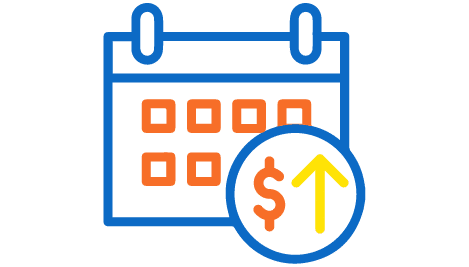
Payment Escalator
A payment escalator is a clause in the solar financing contract that allows the monthly payment to go up every year, usually at a rate of 2.9 percent or more.
A contract with this escalator will show a lower payment in the beginning years for early savings but will almost always result in fewer savings over the life of the contract.
We usually recommend against such payment escalators.
Sometimes, payment escalators are used as a sales ploy to show a much lower payment than other competing offers, with little or no mention of the payment amount rising every year. Be sure to read carefully, understand your goals (short or long term), and choose accordingly.
Loan = no, most but not all solar loans do not have a payment escalator. However, we have seen a few that do, so read carefully.
PPA = yes, some but not all PPA’s DO have a payment escalator.
Lease = yes, some but not all contracts DO have a payment escalator.
Also, anecdotal reports from the real estate industry show that homes with solar leases or PPA’s that have payment escalators have proved to be the least desired solar financing instruments to take over by home buyers.
The payment escalator may make it a little more challenging to sell your home by reducing the pool of interested buyers.
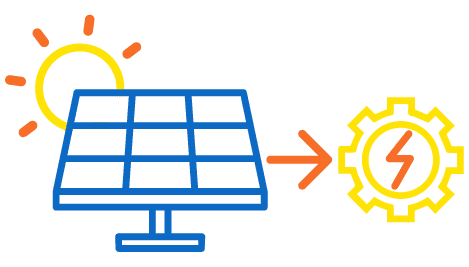
Solar Energy Production Guarantees
The solar finance company will project an annual amount of electricity the solar power system is expected to produce based on several factors (panels, inverters, roof azimuths, etc.) and provide guaranteed and projected production schedules for each year of the entire contract.
Loan = no guarantees in most solar loans but you do have the solar panel and inverter manufacturer’s product, production and degradation warranties.
PPA = there is a guaranteed kilowatt-hour (kWh) production schedule within the PPA contract and shown for each year and the entire term of the power purchase agreement.
Lease = there is a guaranteed kilowatt-hour (kWh) production schedule within the lease contract and shown for each year and the entire term of the solar lease.

Annual Energy Production True-Up
An annual “true-up” in a solar energy contract means that annual adjustments must be made to reflect whether or not the solar energy system produced more or less energy than was projected and guaranteed in the contract for that year.
The solar contract company will monitor the energy production of the system and can either issue a refund check or kWh credits for any annual energy shortfalls, or demand payment for extra energy delivered, or debits to guaranteed energy production in future years.
Loan = does not apply.
PPA = most commonly, there is no annual true-up in a solar PPA whose payment fluctuates each month to reflect the actual energy produced in that period.
However, there does exist level-payment power purchase agreements, in which case true-ups or adjustments will usually apply.
Lease = yes, most leases have annual energy true-ups, though we’ve also seen them for three-year periods. The contract will state the terms of “true-ups” or “performance adjustments.”
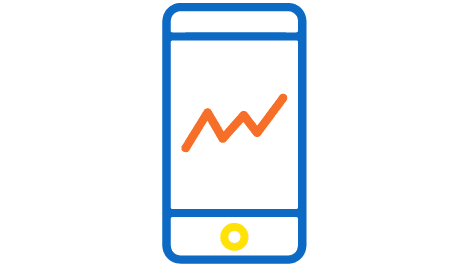
Monitoring Energy Performance
Loan = ultimately you, the homeowner are responsible for monitoring the system. It’s pretty easy since most companies supply phone and cloud-based apps where you can tune in and see how your solar energy system is performing.
Most of the monitoring apps will send alerts.
Most systems include homeowner monitoring of the actual solar energy production, and in more and more cases, the household’s energy consumption is also being added, with side-by-side graphs.
We provide a “Real-time Solar Monitoring & Alert Service” to San Diego CA area homeowners who would prefer that solar professionals are watching their system 24/7.
PPA = PPA company will monitor all energy produced by the system and will usually also provide the homeowner with access to an app that shows system production and perhaps even household consumption.
Lease = the lease company will monitor energy production and provide the homeowner with an app or cloud-based portal to also see energy performance, and perhaps even household consumption.

Warranties & Repairs
Loan = Most high-quality solar panels and micro-inverters come with 25-year product and power production warranties. Box inverters usually have 10-year product warranties.
Most warranties cover defective products but do not include the labor to remove and replace them.
The installation, wiring, and conduit are warrantied for at least ten years by the installing contractor as required by the state of California.
The solar monitoring device will have its own warranty. You’ll be responsible for replacing it after its warranty should it need repair or replacement.
10 to 25-year solar panel product & power warranties (we recommend those with 25/25).
10 to 25-year solar inverter product warranties (we recommend those with 20 to 25).
Ultimately the homeowner is responsible for managing the warranties and making claims if any are needed.
Hopefully, the company that installed their solar power system is still in business and can help them facilitate any warranty claims and repairs required.
We provide solar panel repair service thorughout San Diego County.
PPA = the PPA company is responsible for all maintenance and repairs of the system.
However, most PPA contracts reserve the right NOT to repair the system and can instead implement credits for any lost energy production at the end of the true-up period. Be sure to read the contract carefully as this could have very adverse effects of your electric costs.
For example, let’s say your PPA contract states that your cost for its solar energy is a fixed price of 15 cents per kilowatt-hour. Then we’ll project that two or more solar panels become faulty in seven years, and they do not produce energy.
If the solar PPA company chooses NOT to repair the system but to issue credits instead, per their contract rights, you will then be forced to buy that electricity from the electric utility company, usually at much higher rates.
Any credits received by the solar PPA company at 15 cents per kWh will not cover the full cost of the utility company electricity, and so your expenses have gone up in such a scenario.
It’s something to think about if you’re long-term planning.
Lease = usually the same terms as described above for a solar PPA.

Ability to purchase the system later
Loan = you own the system once the loan gets paid in full.
Most solar loans have no pre-payment penalty so you can pay off the amount due and own the solar power system free and clear at any time after it starts.
PPA = most PPA’s include an option for the homeowner to purchase the system after a stated number of years (usually 7+ years for tax credit and depreciation reasons), or at the end of the contract term for either a stated price or an appraised value at the time of desired purchase.
Lease = most leases include the same option-to-buy as the PPA described above.

What happens when you sell your home?
Most solar finance contracts include an option to transfer the agreement to the new buyer of the property (on approved credit) or to purchase the system outright at a value to be appraised at that time.
Loan = must buy out and pay off the loan upon the sale of the home.
PPA = usually includes both qualify to transfer and buy out options, but usually only after 7+ years due to tax credit and depreciation issues. See the contract for details.
Lease = usually includes both qualify to transfer and buy out options, but also usually only after 7+ years due to tax credit and depreciation issues. See the contract for details.

What happens when you refinance your home with a solar lease or PPA?
Loan = usually you must pay off the loan upon any home refinancing.
PPA = contract places a lien against your property and files it with your County Recorder’s Office so you will need written clearance from the solar company to refinance your property loans.
Lease = also places a lien on your property, and the same process as described above for a PPA usually applies.

What credit rating is required?
Loan = solar loans vary in the credit rating required. Usually, a FICO score of greater than 640 is needed, but some lenders offer loans to lower scores.
Home equity loan = usually a FICO score of 640 or higher is required, but it varies widely. Contact your local credit union, bank, or lender.
Home equity loans are one of the best ways to finance a solar energy system is to take out a home equity loan or line of credit. These are typically there lowest cost loans available.
PACE loan on property taxes = most PACE loans only require home equity, no bankruptcy in the last two or three years, and no missed mortgage payments over the previous two or three years.
PPA = credit ratings vary but common to see credit scores of 640 or higher needed to get approved for a solar PPA.
Lease = credit ratings vary but common to see credit scores of 640 or higher needed to get approved for a solar lease.
Credit qualifications vary significantly by the finance company, but the FICO scores required usually start from the low 600’s.

Federal Investment Tax Credit (ITC) for Income Taxes
There is a 26 percent federal renewable energy income tax credit available if the system is installed and operating by December 31, 2022 (22% if installed between 1/1/2023 and 12/31/2023).
If you’re eligible, it’s like getting a 26 percent rebate on your solar power system.
The IRS will send you a check or apply the credits to taxes owed, equal to 26 percent of the total installed cost of the solar energy system.
This tax credit includes repairs needed to the roof under the installed system.
Federal Solar Tax Credit For Homes
26% in 2022
22% in 2023
Zero afterward
Federal Solar Tax Credit For Businesses
26% in 2022
22% in 2023
10% afterward
Consult your tax advisor. See if you qualify for the Federal Residential Energy Credits on IRS Form 5695.
Who gets the Federal Solar Tax Credits?
Loan = the homeowner receives all federal tax and state income tax credits.
PPA = the PPA company will receive all federal and state income tax credits.
Lease = the leasing company will receive all federal and state income tax credits.
For more information, visit the Solar Energy Industries Association (SEIA) webpage on the Solar Investment Tax Credit.

Solar Renewable Energy Certificates (SRECs)
Loan = the homeowner receives all federal and state solar renewable energy certificates (SRECs are not currently available in California).
PPA = the PPA company will receive all federal and state solar renewable energy certificates (SRECs are not currently available in California).
Lease = the leasing company will receive all federal and state solar renewable energy certificates (SRECs are not currently available in California).
For more information, see the Environmental Protection Agency (EPA) website on renewable energy certificates.
How To Select A Solar Installer
Now that you know everything you need to make an informed decision about how to finance your solar energy system, the next step is to interview solar companies. We’ve put together a 26-point checklist article on “How to Select a Solar Installer.”
Solar Survey:
What are the most important benefits YOU want from solar power?
FREE Solar Analysis
Get a FREE Solar Analysis to see if your property and electrical usage can save with solar power.
Our FREE Solar Analysis are now Virtual!
They can be completely processed and presented online.
Industry technology now enables us to provide accurate system sizing, energy and financial savings estimates, and some financing options without requiring an in-person visit.
We’ll analyze your energy bills, roof or ground space, electrical system, shading affects, solar and calculate the best solar financing options (including zero-down solar that often saves $ from day one).
Then we’ll schedule a time to share the results to you using an online screen-share presentation.
We’ll be able to explain all details and answer your questions.
If you prefer an in-person visit, that option is always available also.
We serviced San Diego County homeowners, businesses, and home builders since 1984.
For more information on PPA’s only, see our article, “What Is A Solar PPA?”
Related articles:
2025 Federal tax credit changes for solar & solar batteries
Solar panel monitoring service
Battery storage system fundamentals
Peak Shaving: Invest in your home’s energy future for significant ROI
Why a battery makes financial sense with solar panels now under NEM 3.0
How long will a solar battery last during a power blackout?
How many batteries are needed to power your home?
How many years do solar batteries last?
Solar Battery or generator for emergency backup power?
How to check if your solar panels are charging the solar battery
Complete Guide to Solar PPA, Lease vs Buying Solar
How to choose a solar installer
Get a FREE solar anaylsis to see if solar energy or a battery is right for your home
- 2025 Federal Tax Credit Changes For Solar Panel Systems & Solar Batteries - July 8, 2025
- How Solar Batteries Work - March 4, 2024
- Solar Battery or Generator for Emergency Backup Power? - January 30, 2024

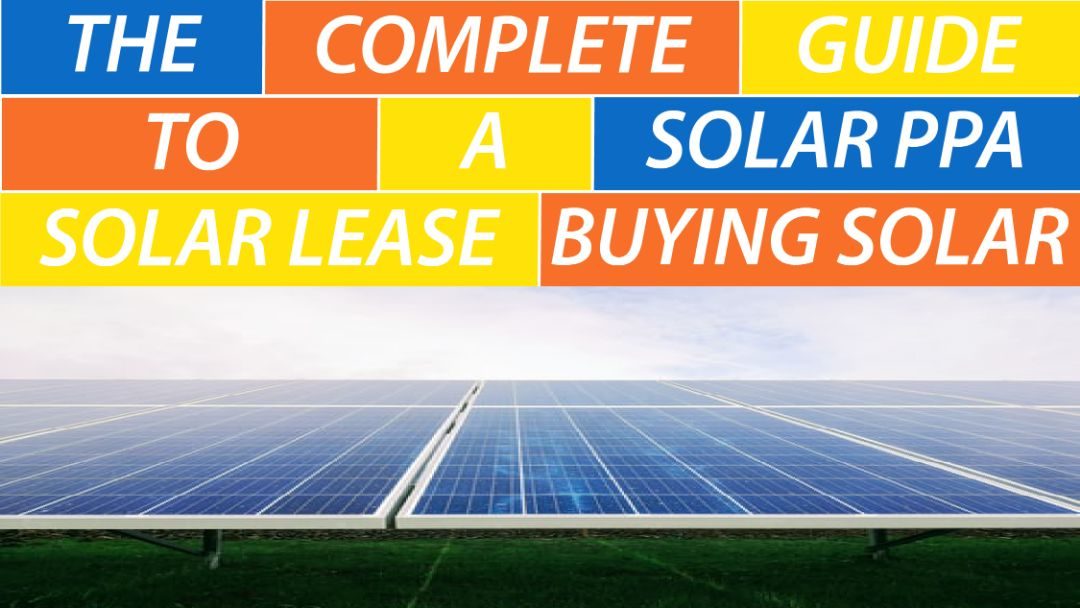


Hi David,
Congratulations on choosing solar energy to power your home for less.
There are third-party PV panel production monitoring systems available on the market. I think you may still run into a monthly charge for the service but you’ll be able to shop it around.
Good luck with your installation.
All the best,
i want to put my own system in as a DIY i have the skill set as i can install it .with 400 watt panels and inverter racking for less than 20.000 and produce more power than i need .i really dont want to pay pge anything at all but i know i will at least have to pay some kind of fee for use of there wires.so my ? is do i have to pay someone to monitor the system or can i do that myself. be cause what they want for monitoring fees is outrages per month this clown said it would cost me 150.00 per month for monitoring fees that is straight up B.S robbery
Hi Kevin,
Sorry to hear of your situation.
If the whole system is down you definitely need their attention. You may want to contact the PPA company directly instead of going through the installation company if you’re not getting communications returned. Check your contract for their contact information or Google their name and find their corporate office.
If only part of the system is down, then you’ll have to read their contract carefully, but most solar leases and PPA’s reserve the right to not make repairs and instead give you equal credits for the lost kilowatt hours.
We’re not lawyers so we can’t help in that dept. We stick to electrical and solar work.
We hope it all turns out alright for you.
All the best!
So wish I new some of this up front. We have a PPA, and now the system has stopped working and we cannot get a repair person out, as of yet. What legal options do we have?
The company is Solar Service Help, financed through Killowatt systems, known now as Spruce.
Thank you,
Kevin